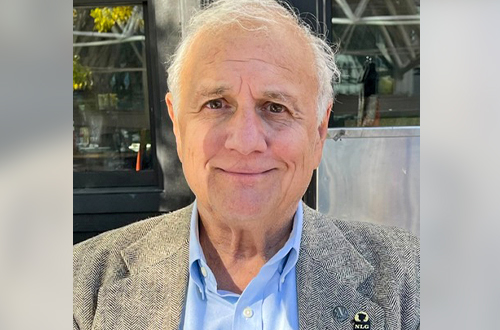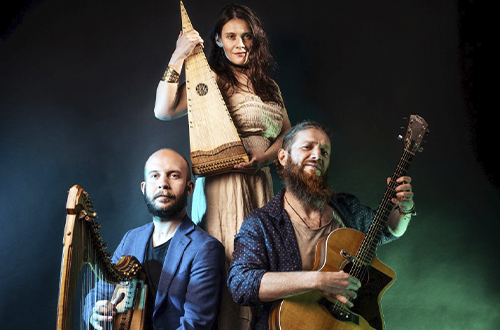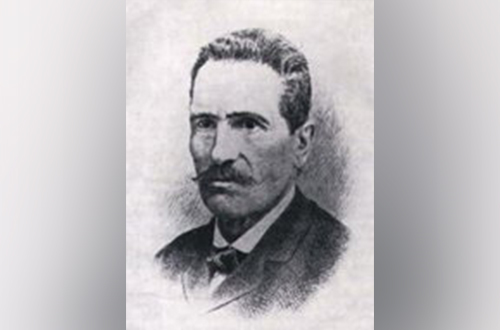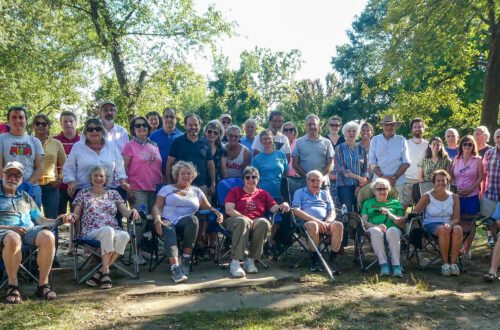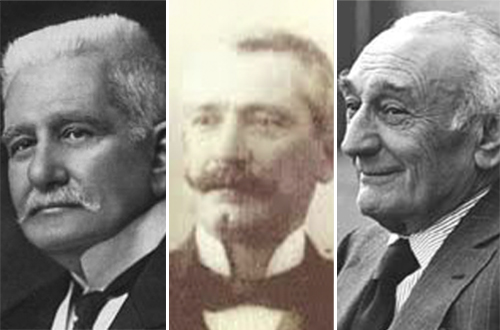-
Expert Details Roman Coin Transition from Metal Lumps to Imperial Gold Coins
Topic of Virtual Talk
By Nancy DeSanti, 1st Vice President-Programs
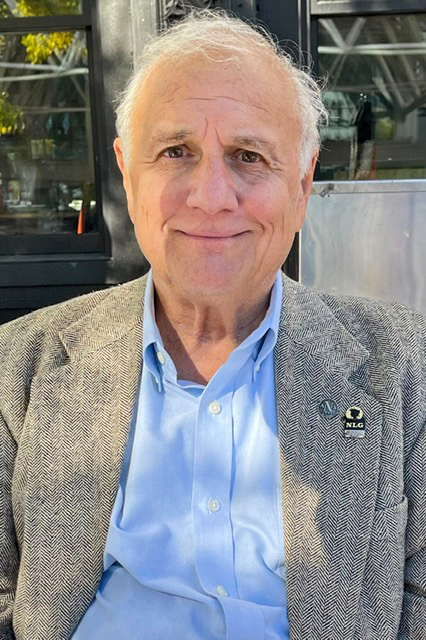
Michael Markowitz AMHS members were treated to a very informative and entertaining virtual talk, “Show Me the Money!” on July 30, 2023, by Michael Markowitz, an expert on Roman coinage. who told us about its evolution from lumps of metal in 300 B.C. to imperial gold coins in 476 A.D.
Mike was born in New York City. His mother’s side of the family is Italian, while his father’s ancestors emigrated from Romania. Mike attended the University of Rochester, then the University of California, Irvine. He worked for many years in the aerospace industry in southern California before moving in 1991 to northern Virginia where he is a senior research specialist for the Center for Naval Analyses.
He is a contributing writer on ancient and medieval coins for CoinWeek.com. He is a member of the American Numismatic Society and the Ancient Numismatic Society of Washington, D.C. He also serves on the board of directors of the Fairfax Coin Club. Mike said that one of his most memorable experiences was spending an afternoon inside the coin vault of the archaeological museum in Siracusa, Sicily.
As Mike told the audience, we collect coins to hold history in our hands. He explained that coins showed symbols the government wanted to communicate to people who were largely illiterate. He noted that Petrarch was one of the first Roman coin collectors. Amazingly, he said there are at least 21,669 different types of Roman coins, according to one authoritative source. As many as 40,000 coins have been found buried in clay pots in fields in rural areas — not surprising since there were no banks then.
He said that for less than $25, you can buy a Roman coin of Constantine the Great with a woman in a winged helmet, and he added that there were many images of women as the personification of virtue. Zenobia, Queen of Palmyra, was one of the women who had a coin made in her image. He noted that the Constantine the Great coin showed a watchtower on the reverse side because, due to the barbarian invasions, there was a need for watchtowers.
A fantastically detailed coin of the Colosseum is one of the rarest coins, he said, and one of them sold in 2011 for over $400,000.
The coin that got Caesar killed, he told us, came about when Julius Caesar put his portrait on a coin as “dictator in perpetuity” which rubbed some senators the wrong way and led to the conspiracy that resulted in his assassination. Interestingly, he said that the word “Caesar” gave rise to the words, “tsar” and “kaiser.”
He noted that the penalties for counterfeiting were barbaric — hands and heads were chopped off — since that was considered an offense against the emperor. But he joked that counterfeiting was invented about a week after coins were invented, and surprisingly, these counterfeits are still collectibles. He warned that a high percentage of Roman coins on eBay are fakes coming from Eastern Europe and China.
There are billions of coins still in the ground in the territories of the former Roman Empire, he said. He added that laws vary as to who gets ownership, but in many countries metal detectors are illegal, so in some countries it is a shady “underground” business.
Mike said the most beautiful coins of the ancient world were from the 4th and 5th centuries B.C., made by talented Greek engravers and found in Siracusa, Sicily.
He pointed out that Olympic medals represent the materials that coins were made of gold, silver, and bronze which was the most plentiful of the three, also used for making armor and weapons. He said coin making was a tough job, and coin makers working in the mint wore black hats so their hair would not catch on fire from the flying sparks.
Mike said one of the best places to see Roman coins is the Museo Nazionale Romano near the Termini train station in Rome. King Vittorio Emanuele III was an expert in Roman coins, and he left his collection to this museum. Mike said he recently checked the website of the Museo Nazionale, and it is unfortunately closed until further notice.
Other important collections of Roman coins are found in the Hermitage in St. Petersburg, Russia, and in London, Paris, and Berlin. He said that the Smithsonian Institution does not exhibit Roman coins due to the difficulty in curating them and because of the security risks.
September/October 2023
-
Digging in the Dirt in Abruzzo and Molise: Noted Archeologist Antonio De Nino
By Joseph “Sonny” Scafetta, Jr.
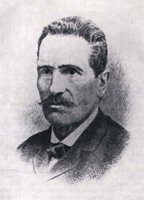
Antonio De Nino
Credit: WikipediaAntonio De Nino was born in the community of Pratola Peligna (population 7,249 in the 2020 Census) in the province of L’Aquila in the region Abruzzo on June 15, 1833. Nothing has been published about his parents, his education, and his immediate family, if any. There was nothing in his background to suggest that he would one day return to his home region as a successful archaeologist.
He first appeared in public records in 1861 when, at the age of 28, he became an elementary school teacher in San Demetrio ne’ Vestini in the province of L’Aquila. After a year, he transferred to teach high school in the town of Leonessa in the province of Rieti in the region of Lazio. In 1872, he was appointed a professor at the “Publio Ovidio Nasone” Technical School, a classics-based secondary school in the city of Sulmona in the province of L’Aquila.
While living in Sulmona, he became interested in archeology and began to study popular local traditions. His first publication Armi Preistoriche (Prehistoric Weapons) appeared in the Gazette of Sulmona in 1874. The Ministry of Public Instruction in Rome appointed him Inspector of Monuments in 1877 and directed him to make excavations systematically in Abruzzo. During that same year, the Lincei Academy began to publish his annual Notizie Degli Scavi (News About Excavations). Later, his reports were printed in the Bulletin of the Institute of Archeology of Italy.
His first major excavation was in the plain of Pentima where the city of Corfinio was built over the ancient town of Corfinium that had been proclaimed the rebel capital of Italy by the Paeligni, an Italic tribe, in 89 B.C. While working there, he discovered the inscription of Herentas, the most important epigraphic text in the language of the Paeligni. He later opened another important excavation campaign at Campo Consolino near the town of Alfedena. The site was a fortified citadel with a cemetery for a city of the Pentri, one of the chief Samnite tribes which disappeared from the historic record after 216 B.C. In the cemetery, De Nino’s team opened 42 tombs which contained the remains of individuals dressed in tribal wardrobes. Over the course of 30 years, he opened 107 excavation campaigns throughout Abruzzo, Molise and Lazio.
Meanwhile, De Nino wrote five tomes entitled Usi e Costumi Abruzzesi (Abruzzesi Usages and Costumes) which appeared in 1879, 1881, 1883, 1887 and 1891. They are all collections of descriptions of local customs and dresses in different parts of Abruzzo. The books are still of fundamental importance for understanding the origins of most popular practices today.
De Nino died in Sulmona on March 1, 1907, at the age of 73. After his death, Sulmona dedicated a street in its historic center in his honor. Also, four archeological museums in Abruzzo are named for him. They are located in his birthplace of Pratola Peligna, in the town of Alfedena, in the city of Corfinio, and in the Convent of the Maddalena at Castel di Sangro.
Sources:
September/October 2023
-
Aielli

By Nancy DeSanti
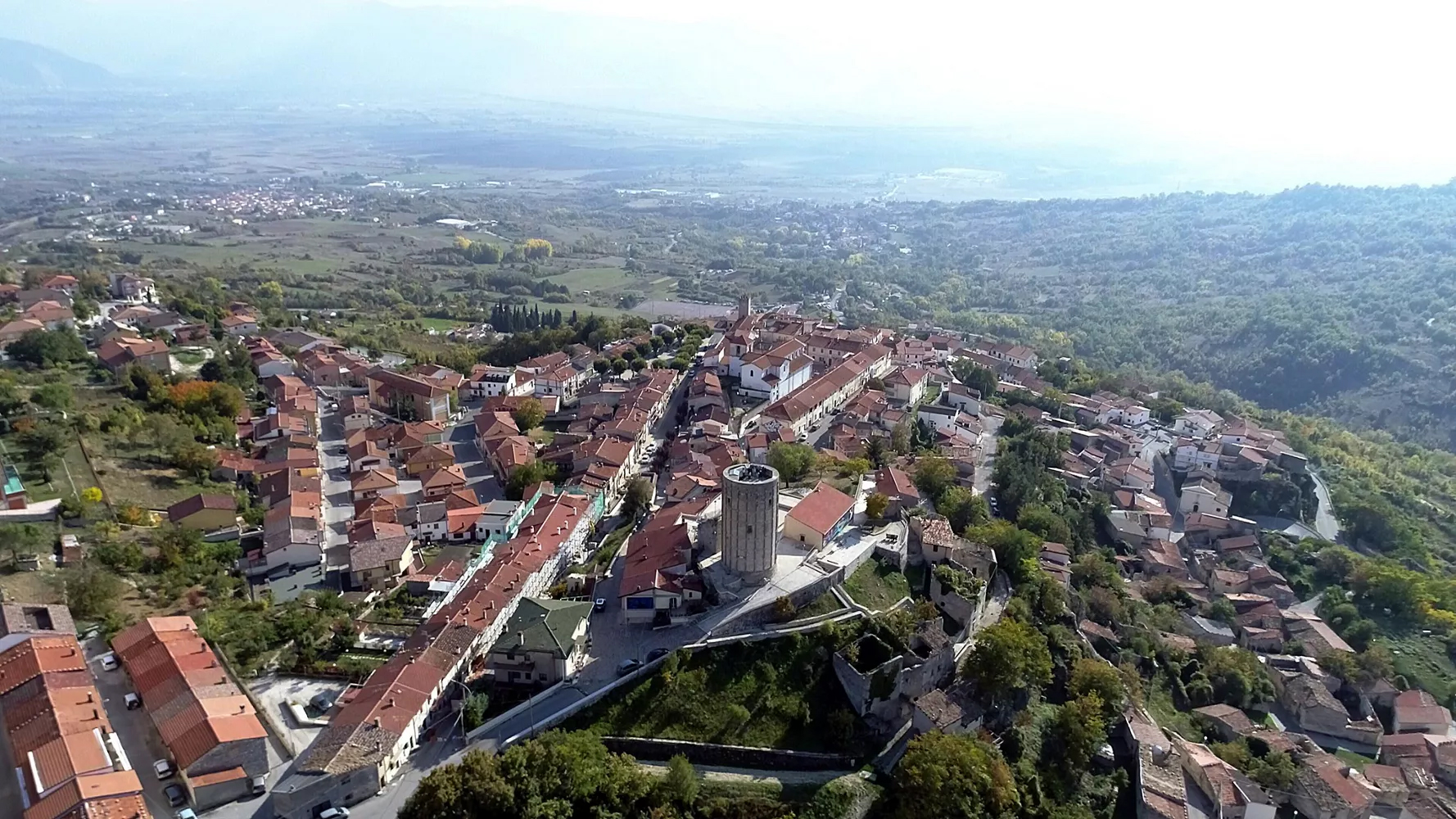
Credit: italia.it Province of L’Aquila, Region of Abruzzo
The beautiful small town of Aielli is located in the province of L’Aquila. It has approximately 1,021 inhabitants, known as Aielesi. Famous for its astronomy and planetary observatory, it is located in the plain of the former Lake Fucino, in the Marsica.
Located on a hill overlooking the whole Fucino basin, Aielli has such fine medieval sights as the cylindrical 14th century tower, once belonging to a larger fortified structure built by Ruggero, Count of Celano, and remarkable churches. Much later, in 1915, an earthquake destroyed a large part of the small town.
The town of Aielli, whose territory is part of the Velino-Sirente Regional Park, is perched on a rocky limestone spur, surrounded by two streams. This position has for centuries made it the ideal place to defend and observe the territory.
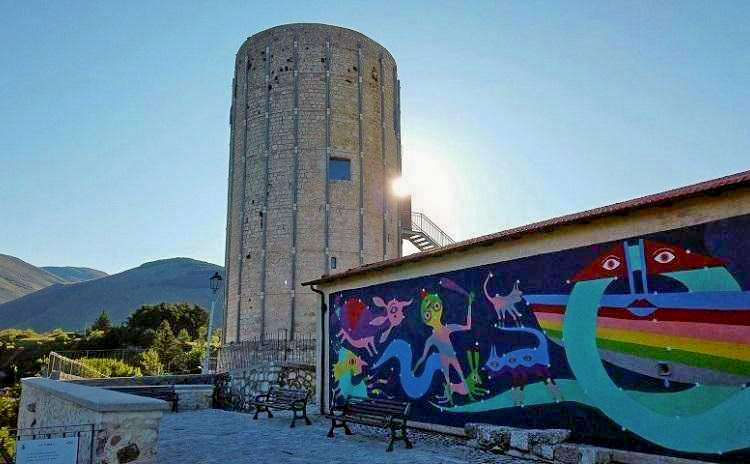
The 14th century cylindrical tower in Aielli.
Credit: Italy by EventsAielli is also rich in historical and artistic elements of great value, among which the imposing 14th century medieval tower known as the Torre delle Stelle (Tower of the Stars) stands out. Today it is an important astronomical observatory open to the public, which also houses the Museo del Cielo (Museum of the Sky) and a scientific library. The observatory is open year-round.
The museum is located in a beautiful square with a particular sundial in the center. More recently, the Museum of the Sky was dedicated to the moon and to outer space. It was inaugurated in 2019 on the occasion of the 50th anniversary of the first moon landing by Neil Armstrong and Buzz Aldrin on July 20, 1969.
Telescopes and other instruments are displayed to show the constellations and the stars. Inside the museum, there is also a specialized scientific library, various optical instruments, a single-channel digital planetarium, some computerized stations for animations and simulations, several photographs of the moon landing, and some sundials. Also on display is the reproduction of the Apollo lunar module with material on the lunar missions and a copy of the spacesuit worn by Armstrong.
In the Tower of the Stars, visitors can take part in various activities, astronomical observations, educational workshops, guided tours and shows, both during the day and at night. There are also workshops for children.
What to See
- The Cylindrical Tower
- The Church of San Rocco
- The beautiful Church of San Adolfo at Aielli Stazione, built in the 1930s with artwork by the sculptor, Arturo Dazzi.
- The remains of a hermitage below Mount Etra.
Important Dates
- August – Festival of the Amaretti (typical cookies made from almonds)
Italiano

Tradotto da Romeo Sabatini
Provincia di dell’Aquila, Regione Abruzzo
La bellissima cittadina di Aielli si trova in provincia dell’Aquila. Ha circa 1.021 abitanti, conosciuti come Aielesi. Famoso per l’astronomia e l’osservatorio planetario, si trova nella piana dell’ex Lago Fucino, nella Marsica.
Su un colle che domina l’intero bacino del Fucino, Aielli conserva ancora pregevoli testimonianze medievali come la torre cilindrica trecentesca, un tempo parte di una più ampia struttura fortificata voluta da Ruggero, conte di Celano, e notevoli chiese. Molto tempo dopo, nel 1915, un terremoto distrusse gran parte della cittadina.
Il comune di Aielli, il cui territorio fa parte del Parco Regionale del Velino-Sirente, è arroccato su uno sperone roccioso calcareo, circondato da due torrenti. Questa posizione ne ha fatto per secoli il luogo ideale per difendere e osservare il territorio.
Aielli è inoltre ricca di elementi storico-artistici di grande pregio, tra i quali spicca l’imponente torre medievale del XIV secolo detta Torre delle Stelle. Oggi è un importante osservatorio astronomico aperto al pubblico, che ospita anche il Museo del Cielo e una biblioteca scientifica. L’osservatorio è aperto tutto l’anno. Il museo si trova in una bellissima piazza con al centro una particolare meridiana.
Più recentemente, il Museo del Cielo è stato dedicato alla luna e allo spazio ed è stato inaugurato nel 2019 in occasione del 50° anniversario del primo allunaggio di Neil Armstrong e Buzz Aldrin il 20 luglio 1969.
Vengono visualizzati telescopi e altri strumenti per mostrare le costellazioni e le stelle. All’interno del museo si trovano anche una biblioteca scientifica specializzata, vari strumenti ottici, un planetario digitale monocanale, alcune postazioni computerizzate per animazioni e simulazioni, diverse fotografie dell’allunaggio e alcune meridiane. In mostra anche la riproduzione del modulo lunare dell’Apollo con materiale sulle missioni lunari e una copia della tuta spaziale indossata da Armstrong.
Nella Torre delle Stelle i visitatori possono prendere parte a diverse attività, osservazioni astronomiche, laboratori didattici, visite guidate e spettacoli, sia diurni che notturni. Ci sono anche laboratori per bambini.
Le attrazioni del luogo:
- La Torre Cilindrica
- Chiesa di San Rocco
- La bella Chiesa di San Adolfo ad Aielli Stazione, costruita negli anni ’30 con l’opera dello scultore, Arturo Dazzi.
- I resti di un eremo sotto il Monte Etra.
Date da ricordare:
- Agosto – Sagra of Amaretti (tipici biscotti delle mandorle)
September/October 2023
-
Civitacampomarano

By Nancy DeSanti
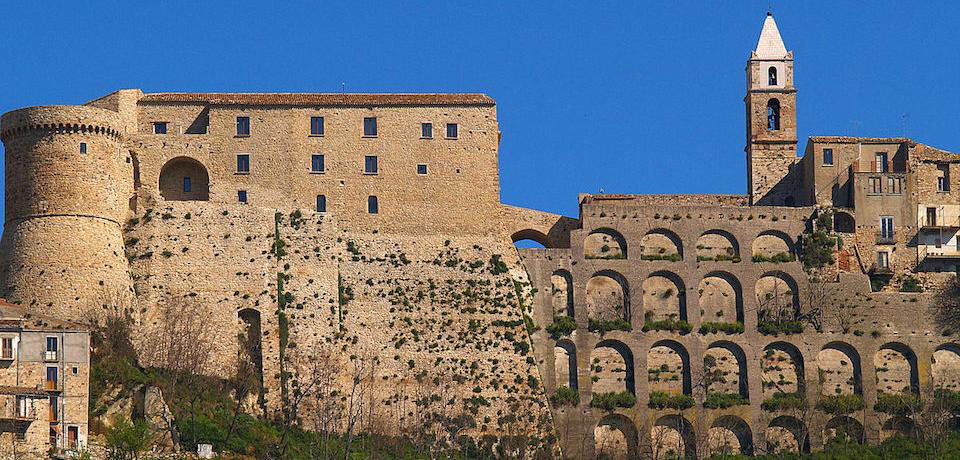
The Angevine Castle
Credit: Italy Magazine
Province of Campobasso, Region of Molise
The small town of Civitacampomarano is located in the province of Campobasso, about 25 kilometers north of the city of Campobasso, on the left side of the Biferno river. It has approximately 520 inhabitants, known as Civitesi. It is known as the Street Art Capital of Molise.
An ancient fortress existed in the area prior to the year 1000 AD, when the Anjou later built their castle. The first recorded feudal lord was Paolo Marchisio. Then in the 13th century, Charles of Anjou gave the fiefdom to the princes of Taranto. They were succeeded in 1328 by Nicola from Boiano, and still later by the di Sangro and the Mirelli families.
In recent years, the town had been at risk of becoming a ghost town since most of its inhabitants left in search of a better future elsewhere. Then, in 2014 Ylenia Carelli, the president of the local cultural organization ProLoco “Vincenzo Cuoco,” got in touch with Roman street artist Alice Pasquini after watching her interview on TV and invited her to help revitalize the village through street art. The artist immediately accepted and made a series of murals inspired by some old photographs.
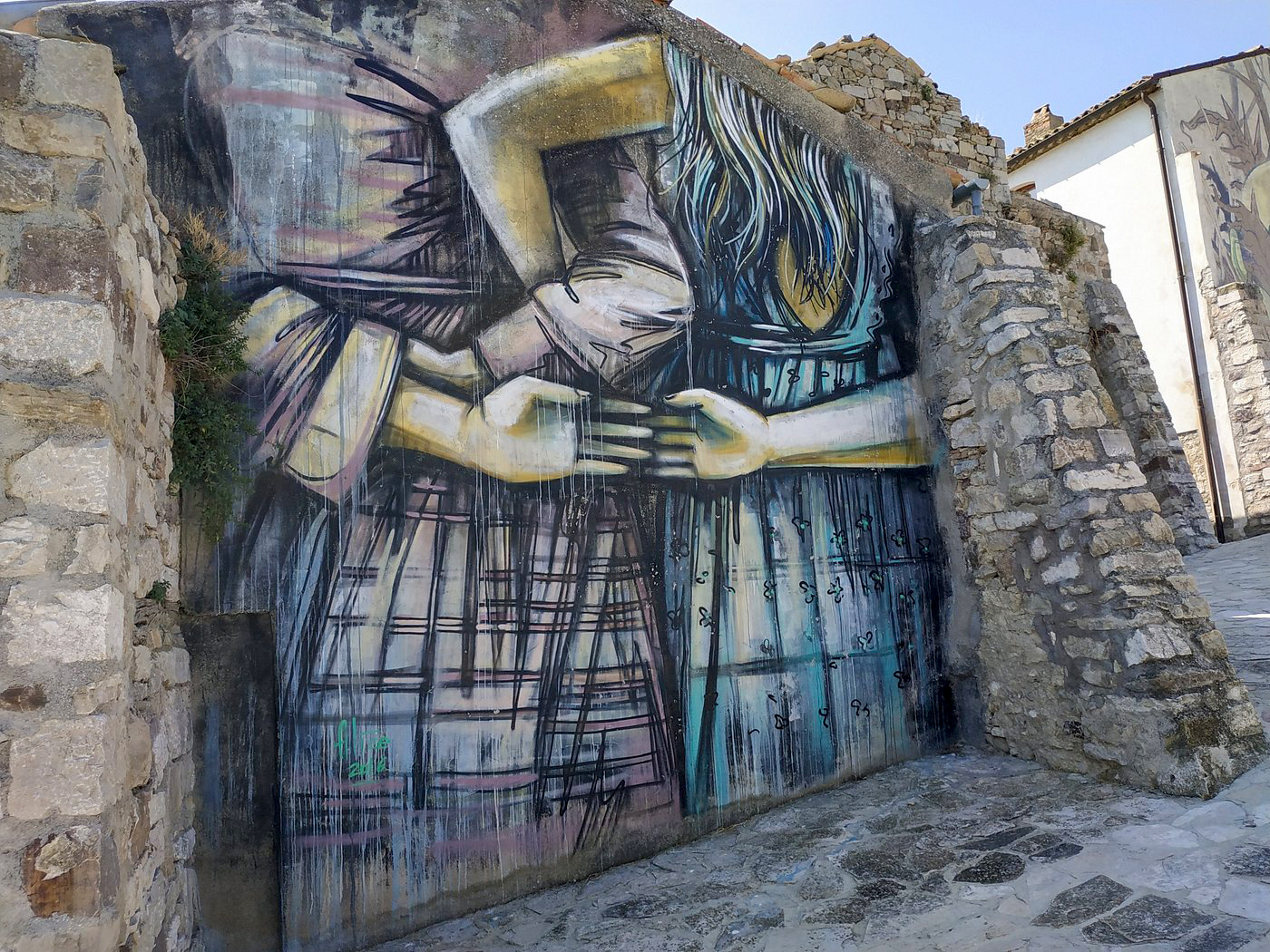
CVTà Street Fest in Civitacampomarano
Credit: Italy MagazineThis artistic project begun in 2016 managed to bring new life to the village and soon evolved into a festival, CVTà Street Fest. “CVTà” is the way residents used to call their town in dialect. Now this event sees the participation of street artists from all over the world. They come to Civitacampomarano to leave their visual mark on the walls that residents eagerly make available. The murals are perfectly integrated into the village, making it a fantastic open-air gallery.
Visually impressive, brightly colored murals are painted onto the walls of old buildings as a way of rediscovering the town’s historical center, fascinating everyone who pauses to admire them. The festival is one of the challenges won by this visionary village: to capture beauty through art and its ability to narrate ever-popular stories.
Street art is not the only attraction in Civitacampomarano. For example, there is a splendid Angevine castle dating back to the 13th century. Its imposing structure dominates the entire town.
The town is known for cielli, a cookie filled with a mixture of fruits or grape must. It is the birthplace of soldier and patriot, Gabriele Pepe, and of politician, Risorgimento patriot, writer, and historian, Vincenzo Cuoco.
Among the other sights worth visiting are the Church of Santa Maria Maggiore, the Church of Santa Maria delle Grazie with a late Gothic portal, and the Church of San Giorgio Martire.
What to See
- Angevine Castle from the 13th century, with two typical round towers
- Church of Santa Maria Maggiore (c. 11th century)
- Church of Santa Maria delle Grazie, with a late Gothic portal.
- Church of San Giorgio Martire
- Home of Risorgimento patriot, Vincenzo Cuoco
- Vallemonterosso Park
Italiano

Tradotto da Romeo Sabatini
Provincia di Campobasso, Regione Molise
Il piccolo comune di Civitacampomarano si trova in provincia di Campobasso, a circa 25 chilometri a nord di Campobasso sulla sponda sinistra del fiume Biferno. Conta circa 520 abitanti, detti Civitesi. È conosciuta come la Capitale della Street Art del Molise.
Un’antica fortezza esisteva nella zona prima dell’anno 1000 dC, quando in seguito gli Angioini costruirono il loro castello. Il primo feudatario di cui si abbia notizia fu Paolo Marchisio. Poi nel XIII secolo Carlo d’Angiò concesse il feudo ai principi di Taranto. Quali successero nel 1328 per Nicola da Boiano, e ancora successivamente i di Sangro ei Mirelli famiglie.
Negli ultimi anni, la cittadina ha rischiato di diventare una città fantasma poiché la maggior parte dei suoi abitanti è partita in cerca di un futuro migliore altrove. Poi, nel 2014 Ylenia Carelli, presidente della locale organizzazione culturale ProLoco “Vincenzo Cuoco”. Ha contattato la street artist romana Alice Pasquini dopo aver visto la sua intervista in tv e l’ha invitata a rivitalizzare il paese attraverso la street art. L’artista accettò subito e fece una serie di murales ispirati ad alcune vecchie fotografie.
Questo progetto artistico iniziato nel 2016 è riuscito a portare nuova vita al paese e ben presto si è evoluto in un festival, il CVTà Street Fest. “CVTà” è il modo dialettale con cui i residenti chiamavano la loro città. Ora questo evento vede la partecipazione di artisti di strada provenienti da tutto il mondo che vengono a Civitacampomarano per lasciare la loro impronta visiva sui muri che i residenti mettono a disposizione con entusiasmo. I murales sono perfettamente integrati nel villaggio, rendendolo una fantastica galleria a cielo aperto.
Di grande impatto visivo, murales dai colori vivaci sono dipinti sui muri di vecchi edifici per riscoprire il centro storico della città, affascinando chiunque si soffermi ad ammirarli. Il festival è una delle sfide vinte da questo villaggio visionario: catturare la bellezza attraverso l’arte e la sua capacità di raccontare storie sempre popolari.
La street art non è l’unica attrazione di Civitacampomarano. Ad esempio, vi è uno splendido castello angioino risalente al XIII secolo. La imponente struttura domina l’intero paese.
La città è nota per i cielli, un biscotto ripieno di una miscela di frutta o mosto d’uva. Ha dato i natali al soldato e patriota, Gabriele Pepe, e al politico, patriota risorgimentale, scrittore, e storico, Vincenzo Cuoco.
Tra i oltri monumenti da visitare vi sono la Chiesa di Santa Maria Maggiore, la Chiesa di Santa Maria delle Grazie, con portale tardogotico, e la Chiesa di San Giorgio Martire.
Le attrazioni del luogo:
- Castello Angioino del XIII secolo, con due tipiche torri circolari
- Chiesa di Santa Maria Maggiore (XI secolo circa)
- Chiesa di Santa Maria delle Grazie, con portale tardogotico.
- Chiesa di San Giorgio Martire
- Casa del patriota risorgimentale, Vincenzo Cuoco
- Parco Vallemonterosso
September/October 2023
-
Siamo Una Famiglia

AMHS Group Views Dante and Canova Exhibits
On July 9, 2023, a group of 13 AMHS members and friends toured the exhibit, “Going through Hell: The Divine Dante“ at the National Gallery of Art in Washington, D.C. The exhibit explores the influence of the Divine Comedy in 20 works of art from the collection of the National Gallery beginning with the 16th-century painting, Allegorical Portrait of Dante. The works in the exhibit range from rare early printed editions of the Divine Comedy to sculptures by Auguste Rodin who created them initially for his monumental project, The Gates of Hell, to works on paper from the 15th to the 20th century by William Blake and Robert Rauschenberg.
The group also used the opportunity to visit the exhibit “Canova: Sketching in Clay.“ Canova is one of the most famous artists of the revolutionary period in Europe. Working with his hands and small tools, Canova produced sketch models in clay. These models helped him plan his designs for his large statues in marble. More than 30 of his 60 or so surviving models were on display. Canova was born in 1757 in the commune of Possagno in the province of Treviso in the region of Veneto, Italy. Both his father and his grandfather were sculptors and stone carvers. Following the exhibit visits, the group had lunch together in the Cascades Café on the ground floor of the Gallery. Thanks to AMHS members Mark Lino, Chris Renneker, and Maria D’Andrea-Yothers for organizing this cultural and social outing.
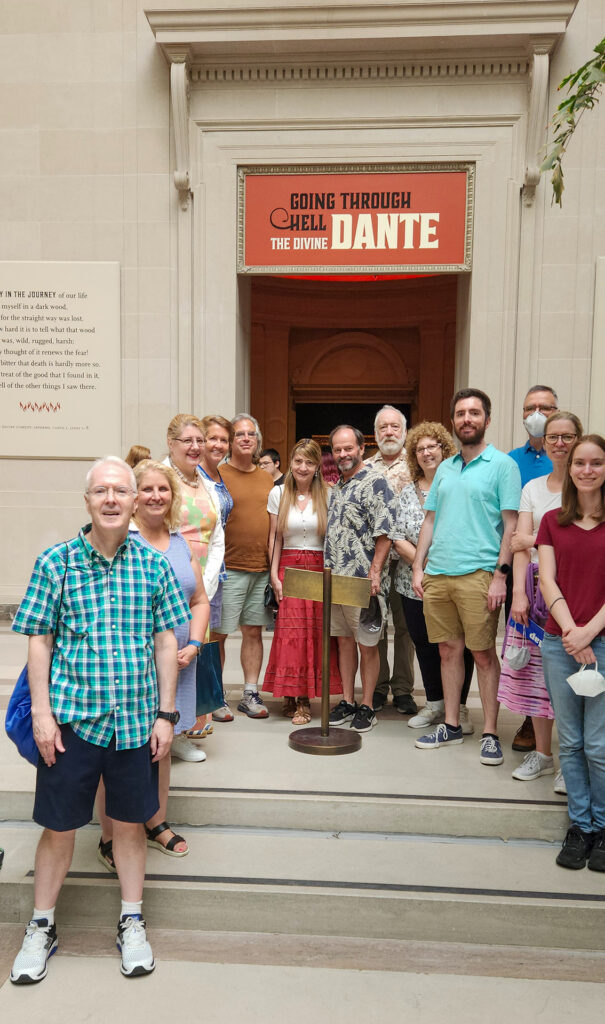
AMHS members, family, and friends outside the Dante exhibit. Farewell to Fr. Diego Purcielli
By Nancy DeSanti
A farewell potluck lunch was held in the newly renovated Casa Italiana on Sunday, July 16, 2023, for Holy Rosary priest, Diego Puricelli, with many AMHS members in attendance. Father Diego returned to Rome on July 19, after completing his doctoral studies in bioethics at Georgetown University.
The organizer of the event was AMHS member, Maria Marigliano, who invited various organizations to say a few words about Father Diego. On behalf of the AMHS, Nancy DeSanti said that Father Diego had been a real blessing to the parish, but he had also brightened our AMHS events at Casa Italiana with his presence. She added: “I especially remember Father Diego discussing his doctoral studies with our Nobel Prize-winning speaker, Dr. John Mather, last January. Also, we noticed and appreciate how he greets parishioners coming to Mass and chats with them. So, while we are sad that he is leaving us, we are glad that he has successfully completed his studies here and is moving on to the next chapter of his life, in Italy, where he will be able to see his family. So, to Father Diego, we say ‘thank you’ for the blessing you have been to all of us.”
At Mass the following Sunday, a message from Father Diego was read, thanking everyone for his warm send-off, which he said he will always remember and appreciated so much.
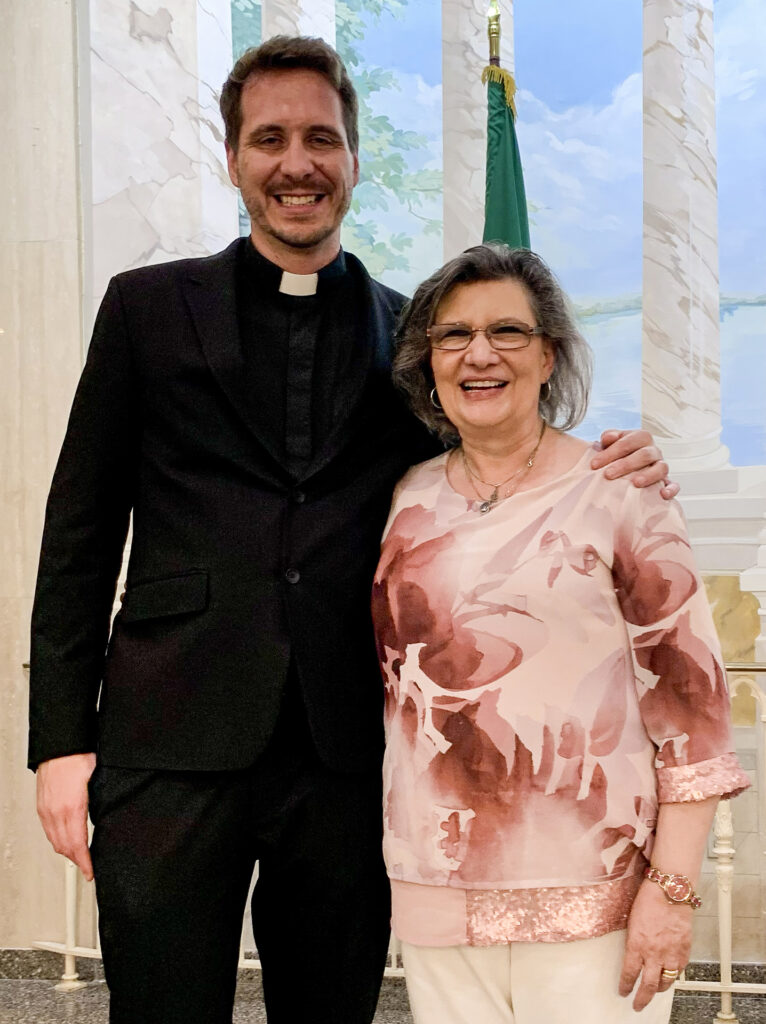
Fr. Diego with AMHS member Maria Marigliano. Gathering of the Clan
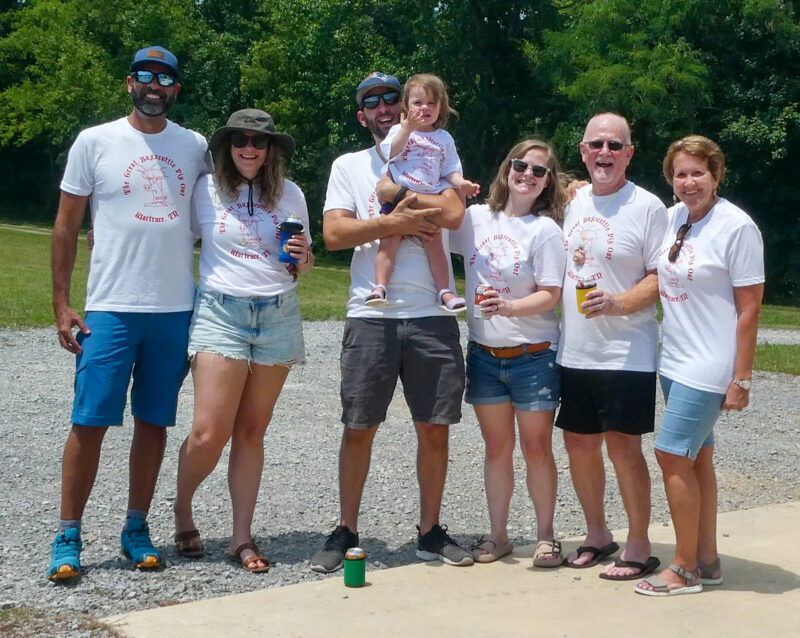
The D’Andrea-Yothers-Gardner “clan” at the Yothers family reunion, the “Great Bugscuffle Pigout” in Wartrace, Tenn., on July 29, 2023. From left, Luis Lobo, Lauren Yothers, John Gardner, daughter Lillie, Mara Gardner, and AMHS members Sam Yothers and Maria D’Andrea-Yothers. AMHS Visits Da Vinci Exhibit
By Mark Lino
On August 21, members of AMHS visited “Imagining the Future — Leonardo da Vinci: In the Mind of an Italian Genius” at the Martin Luther King Memorial Library in Washington, D.C., the last day of the show. The exhibit displayed drawings from Da Vinci’s Codex Atlanticus, which belongs to Milan’s Biblioteca Ambrosiana. This is the first time any part of the codex was ever seen in the United States. Twelve pages of Da Vinci’s drawings, diagrams, and notes made between 1478 and the artist’s death in 1519 were on display.
Among the illustrations were mechanical wings for possible human flight, a perpetual motion machine designed to be powered by water, and an underwater breathing device. These drawings show how far ahead of his time da Vinci was. Those of us on the tour were also struck by the preservation of these 500-year-old drawings. Some looked like they were drawn only a few years ago!
“Imagining the Future” was sponsored by Confindustria, Italy’s national chamber of commerce, and several Italian companies to mark the recent opening of Confindustria’s first Washington office. Now that the show has ended, Da Vinci’s drawings will return to Milan, but they will not be shown there anytime soon. According to the Washington Post, the fragile pages will be put in the dark for three years to give them a rest once back in Milan. This made their brief exhibition in Washington even more of a special occasion.
After the tour of the exhibit, AMHS members went to lunch at Matchbox Pizza. They have a clam pizza, which one does not see at many DC-area pizzerias but is popular in Massachusetts, where AMHS member Mark Lino grew up. Special thanks to Maria D’Andrea-Yothers for organizing the Da Vinci outing.
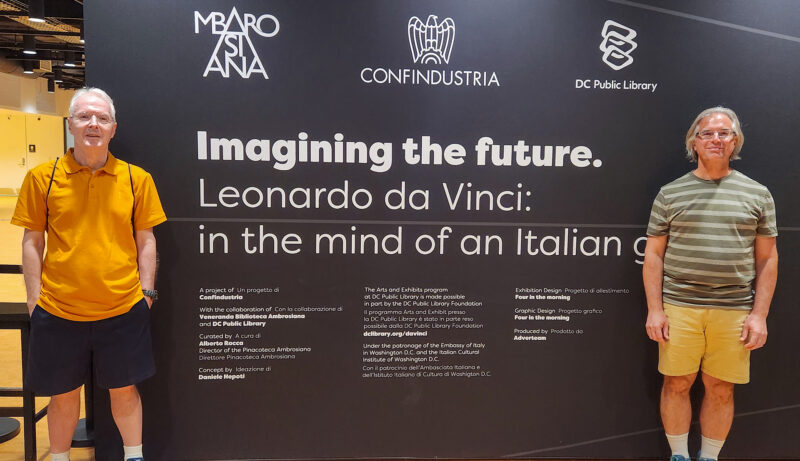
AMHS Board member Mark Lino (left) and Ryan Lore at the Da Vinci exhibit. September/October 2023
